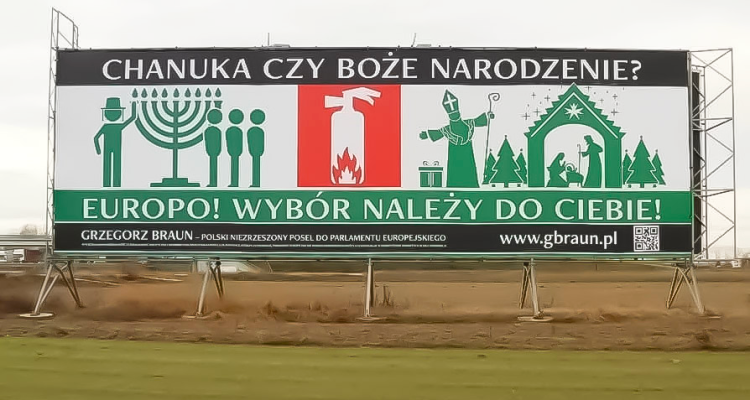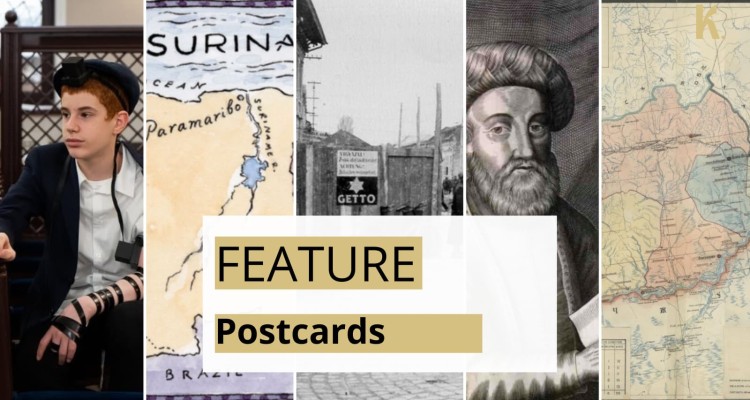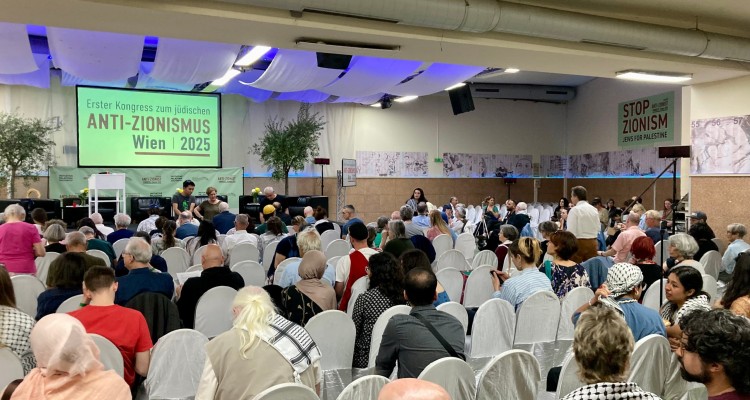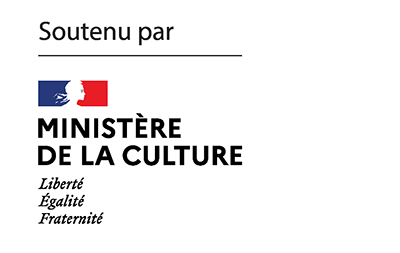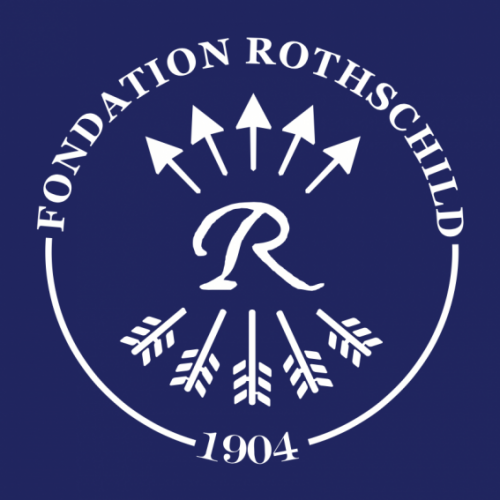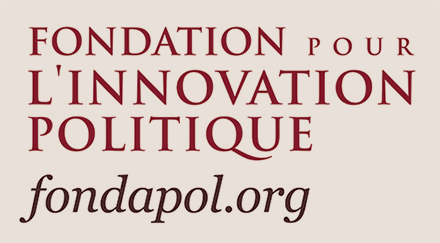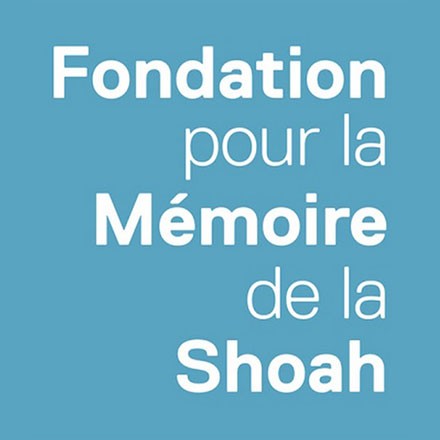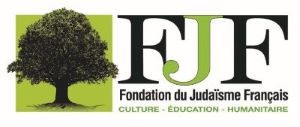Our K. editorial team continues their reports from Israel with Julia Christ and Elie Petit. After their account of the demonstration for the release of the hostages on Saturday May 4, 2024, this time they attended a Yom Hazikaron ceremony with one question in mind: how does this eve of the “Remembrance Day for Israeli War Victims and Victims of Actions of Terrorism” differ from all the others?
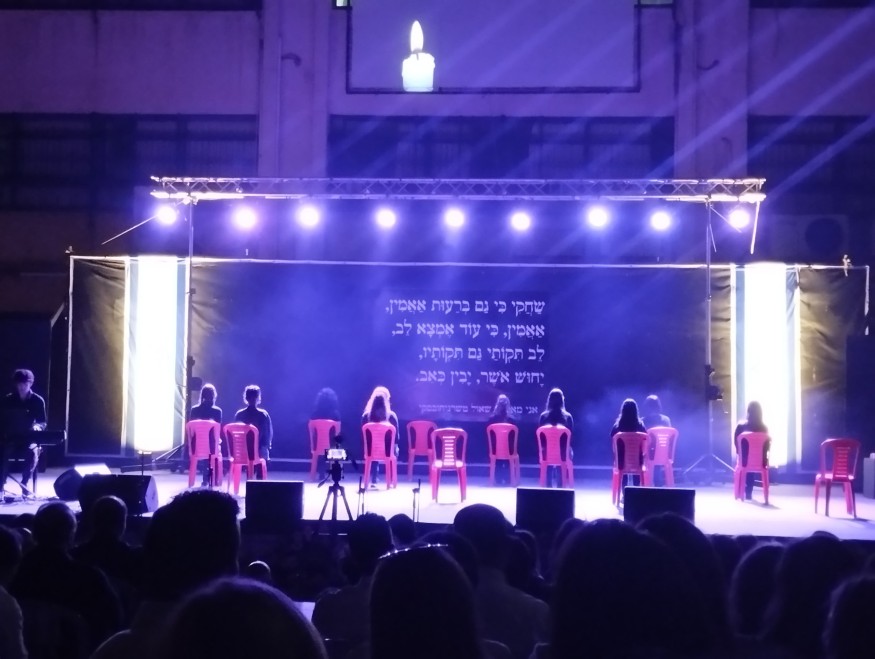
Tel Aviv, Charles Clore Park, May 13, 2024, Yom Hazikaron, 10:50
The night’s rain has cleared the city’s air. Yafo, a few hundred meters away, is no longer shrouded in a sticky haze as it has been in recent days. A young man gives his dog water at a drinking fountain intended for pedestrians. The animal puts its paws on the basin and licks the tap greedily. No one objects. On one of the many signs forbidding access to the sea by the rocks – a mortal danger – the inscription “Bring them home” covers the warning from the municipality. A woman wearing a T-shirt emblazoned with the same slogan wanders along the promenade, not knowing where to turn. People stroll, sunbathe, jog, look at the sea. Young men race around on electric bicycles that look like something out of Mad Max.
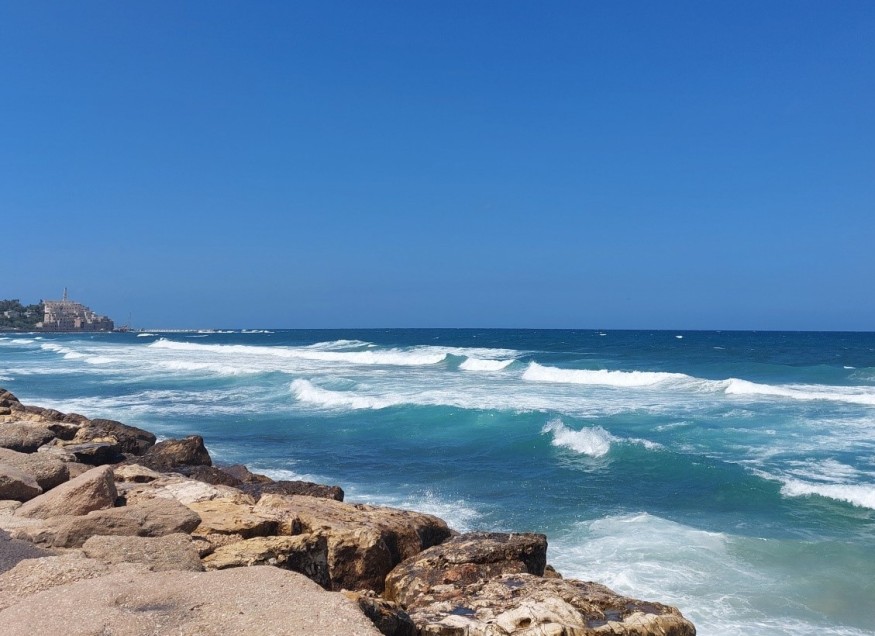
Then, at 11 a.m., the siren sounds. Everyone stops, even those who had been basking in the sun without doing anything. In the distance, drivers stop their cars, no matter if it’s in the middle of a crossroads; they get out and stand in the street. Hands folded in front or behind their backs, Israelis honoring their compatriots killed on the battlefield or assassinated in bomb attacks. A few days earlier, the same siren had sounded for Yom HaShoah, and here too Israelis stopped, but this time to honor those who were murdered by the Germans and their collaborators in Europe.
Yom Hazikaron (Remembrance day for Israeli war victims and victims of actions of terrorism) was introduced by the State of Israel in 1951 to pay tribute to soldiers who died for the homeland. In 1949 and 1950 this tribute was still paid on Independence Day, Yom Ha’atzmaut, but it soon became clear that the emotional tension between mourning and joy was too unbearable, so that now people remember, and then celebrate the following day. Since 1998, Israeli civilians and Jewish victims of terrorism have been included in the tribute.
While the image of an entire country frozen in silence, at the sound of the same siren that warns of attacks, is in itself striking, it is not the immobilization of joggers, cyclists or even motorists that is most remarkable: people knew full well that when they went out at around 11 a.m. they would have to stop their sport, their game or their run for a minute – they calculated this pause. They planned to freeze together, as if to contrast – especially here by the sea – with nature and its movement, which nothing can stop. The waves crash, the birds sing, the dog, humanized as he is by his master, stirs. Only human beings are capable of really stopping, and it’s as if we’re going out to demonstrate, to ourselves, to others, and perhaps to the whole world, what culture can achieve. There’s something undeniably sublime about this scene. Then there are the old people. We see them struggle to their feet, sometimes leaning on canes or crutches, braving the wreckage of age for this minute dedicated to the dead. The fact that death interrupts life, even when it is in the process of fading away, that those who have so little time left want to dedicate this minute, often in pain, to those who have made life possible here, in this small country where people think they are protected from antisemitic persecution, is what moves us most during this minute. It’s also what makes Israel such a hard place to understand, given our European relationship with the idea of “country”, which in order to cherish we often imbue with irony or fantasy. In fact, there’s no double meaning in the standing position adopted by all, head tilted slightly downwards. No smug nationalism in the gratitude expressed in this gesture.
Tel Aviv, Gymnasia Herzliya, May 12, 19:55 (eve of Yom Hazikaron)
The same direct connection to Israel could be seen the day before, when we attended the Yom Hazikaron ceremony at Herzliya High School, named Gymnasia by its German Zionist founders in 1906. Originally located on Herzl Street (hence the name Herzliya, which it still bears), it was demolished in 1962 and rebuilt the same year on Jabotinsky Street. Although it may seem to embody, on the small scale of its geographical history, the entire history of Israel’s last thirty years, there’s no trace of ideological decadence to be found on site. That the heads of hundreds of students dressed in white – a color which in Jewish ritual signifies the solemnity of a holiday – bow at the sound of the siren at 8 p.m., yet remain with their heads raised when the national anthem (Hatikva) is sung at the end of the ceremony, does not seem to be the effect of an empty formality, but of a singular relationship to what it means to “have a country”. All those present here seem to know very well what Israel means: security in the Jewish sense of the word, protection from discrimination and persecution. And they all know that every year, men and women die for this goal, that they themselves could die as soon as they start their military service; and every year, they have nothing to object to, neither to the dead nor to their own future.
Every year – including this year?
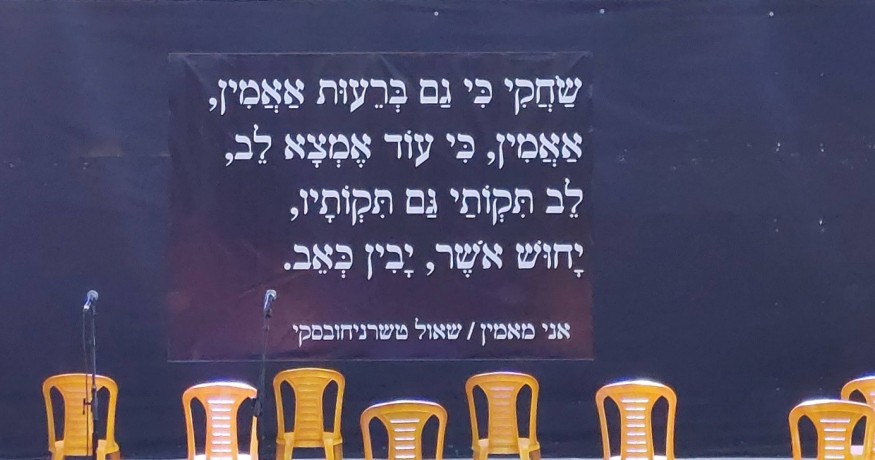
The chairs are all occupied by the young audience from Herzliya High School. On stage, yellow chairs with their backs to the audience recall the color of the movement for the return of the hostages. A lectern is set up for speeches, with two young women taking it in turns to announce the speakers. Just before 8pm, they come forward to ask for the phones to be switched off before the siren starts to announce the start of Yom Hazikaron.
After the minute of the siren passed, everyone remains standing. A young soldier, a former high school student, flies the flag at half-mast, the brother of one of this year’s fallen receives the torch to light the memorial flame. Everyone sits down. The school’s military training officer takes the floor to remind us of the principle of “purity of arms”, a code specific to the IDF stipulating that every soldier must refuse an order he considers amoral. Criticism of the Netanyahu government is barely concealed in his words. Everyone stands up. Three prayers are recited by male members of the families who have lost loved ones – the school has had four victims since October 7.
8pm, the siren sounds
The names of former students who fell in Israel’s wars and before the creation of the state are read out. It takes several minutes of listening to understand that the names are listed in alphabetical order, and that we’re only at Bet, the second letter of the Hebrew alphabet. How is it that a single high school has so many dead? Upon paying attention to the date of death of the deceased, we realize that the hecatomb took place in 1948. Most of the high school’s victims died at the age of 20 or 22. The reading lasts 11 minutes, a name called every two or three seconds, to a version of Chopin’s Prelude in E minor; the faces of the dead are projected on a large screen, for those whose photos are available. Black and white is often replaced by color. Breaking with the alphabetical order in which the school’s victims have been listed since 1915, the names of the four people killed in action since October 7 or murdered at the Nova festival are read out last. Next year, they will have found their place in the alphabetical order of the dead.
Speeches follow, often in broken voices: a mother, a teacher, a friend. Biology teacher Ormi Iram reads a letter from a mother who was absent from the ceremony, to her son who was killed at the Nova festival. After the ceremony, he explains: “He was at the festival and she didn’t know he was there. It was only after a few hours that she realized it. For me, it was very important to contact her before reading her message, to talk to her on the phone and to get to know her son better, in small details that had not been reported in the newspapers, to get to know the soul that is behind the text I was reading”.
On stage, yellow chairs provide the minimalist backdrop for a choreography performed exclusively by young women, alternating songs and recitations. The set is alternately lit in blue and white, the colors of the state, then in red and black, the color of the fight to free the hostages.
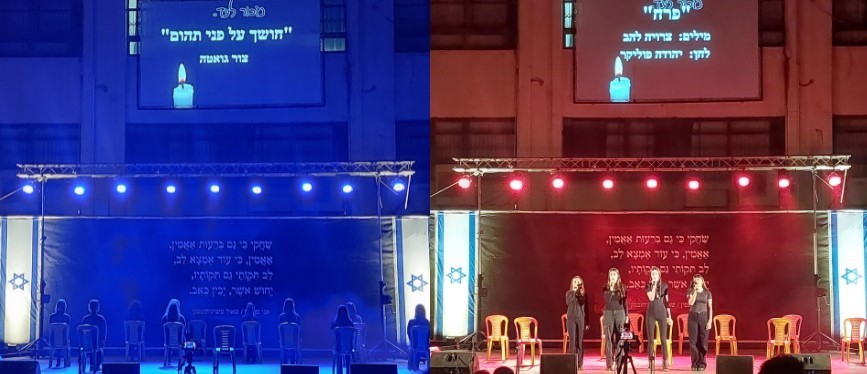
Zohar and Shachar take part in the performance. They are friends and are both members of the high school drama group. They have already taken part in the same ceremony in previous years.
“The first song in the staging is about a dialogue between two people, one of whom expresses doubt about how difficult it is to have a country. The other replies: ‘No, I’ll keep on believing and it will come true'” says Zohar. Shachar continues: “The last song is called Omnam. I like it because it shows that we have hope and that a better day will come, that we must not give up”.
“This year, the chairs are yellow to remind us of the hostages,” explains Shachar. “Because of everything that is happening… four names were added to the list. So everybody knew that while we were preparing for today, that it would be the hardest ceremony of our lives“. After their final exams, Zohar wants to go into film or music, while Shachar doesn’t yet know what she wants to do. Before that, they will go into the army, for two years. “Thank you for wanting to tell Europe about what’s happening here,” says Shachar. “We have the impression that nobody wants to know”. Then this sentence: “We want all this to end, we want the hostages back, we’re ready for any concessions. That’s the most important thing for us.
We chase after the school principal, who, alongside the training officer, has made the only speech with a political undertone. For Dr. Zeev Dagani, this is the last of his sixteen years as principal. It was a rollercoaster. First, he had resigned with a bang in September 2023 because the school’s board of governors had banned a demonstration by students preparing to refuse to join the army. “We must put an end to judicial reform and stop participating in an army that serves the settlements and the occupation,” Tal Mitnick, 17, one of the organizers of the “Youth Against Dictatorship” initiative, had declared in a video. Then, as for all of Israel, October 7 arrived. And Zeev Dagani silently returned to his post.
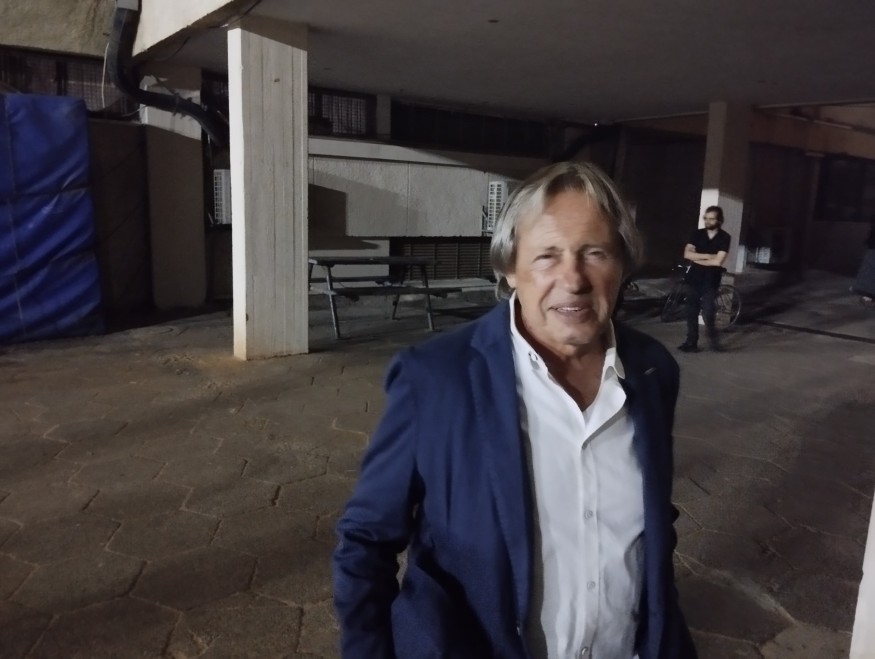
Many students came to greet him at the end of the ceremony. He spoke to each one of them. “I simply told them I loved them”. Returning to his speech, he said: “Despite everything, I affirmed that there is hope, that something good is going to happen. At least, I hope so.” He immediately added: “I don’t always believe it, but I have to say it. Peace may not come, I don’t know. As a director, as an educator, I have to say that there is hope. But personally…”. Was this Yom Hazikaron eve different from all others? For Zeev Dagani, not at all: “We haven’t changed the formula of the ceremony, apart from the mourners’ speeches and messages. These are names that are added to the fallen alumni”.
And indeed, Israel chose to honor the victims of October 7 on that day, not on Yom HaShoah, even though the word pogrom is used to describe the massacres. As if, by including their names in the list of those who fell in defense of the country, we were reassuring ourselves that security in the Jewish sense of the term had not been undermined by what is known here as “Black Saturday”.
Julia Christ and Elie Petit
Special thanks to our guide and translator, Bernard Dov Belz
